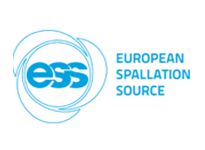ESS
courtesy ESS
General Description
The European Spallation Source (ESS) is a European Research Infrastructure Consortium (ERIC), a multi-disciplinary research facility based on the world’s most powerful neutron source. The unique capabilities of this new facility will both greatly exceed and complement those of today's leading neutron sources, enabling new opportunities for researchers across the spectrum of scientific discovery, including life sciences, energy, environmental technology, cultural heritage and fundamental physics.
The ESS facility is being built in Lund, Sweden, while the ESS Data Management and Software Centre (DMSC) is located in Copenhagen, Denmark. ESS employs over 300 staff from 41 nations.
The European Spallation Source is one of the largest science and technology infrastructure projects being built in Europe today. The facility design and construction includes the most powerful linear proton accelerator ever built, a four-tons helium-cooled tungsten target wheel, 24 state-of-the-art neutron instruments, a suite of laboratories, and a supercomputing data management and software development center.
The high energy proton beam from the linear accelerator strikes the tungsten target wheel and neutrons are released through the spallation process. ESS will produce a 5 MW pulsed neutron beam that will be around 30 times more powerful than existing facilities.
Construction work began in 2014, the first neutron beams are expected in 2019 and the facility is scheduled to be open for scientific research in 2022. Final completion of the research center is planned for 2026 and the operational lifetime is planned to be 40 years.
Founding year: 2010
Members (15): Czech Republik, Denmark, Estonia, France, Germany, Hungary, Italy, Lithuania, Netherlands, Norway, Poland, Spain, Sweden, Switzerland, United Kingdom
Total ESS Construction Budget 2015: 1'830 M€
Total Swiss financial contribution: ~3.5%
Swiss involved research institutions: PSI, EPFL
Procurement policy
ESS is being built by a combination of commercial procurement and In-Kind Contributions. It is expected that about 50% of ESS will be built through In-Kind Contributions from member countries. The remaining 50% will be offered as commercial contracts under EU procurement rules.
Instead of donating money directly to the ESS, member states can decide to supply technical components, R&D studies, personnel or other products or services relevant to the construction of the facility. These contributions are referred to as In-Kind Contributions.
The Swiss In-Kind budget is exclusively reserved for Swiss academic institutions or for Swiss industry with the supervision of an academic institution. It is allocated under the arbitration of the Swiss ESS In-Kind Committee (with members from SERI, PSI, EPFL). Requests for this funding consider the Enforcement guidelines and use the following Registration form.
For all commercial contracting outside of In-Kind Contributions, the ESS follows EU procurement rules using the criteria of the "most economically advantageous tender”. To be able to respond to tenders, companies must register with the ESS by filling out a business profile on the ESS website.
Since a large number of the initial tasks at the ESS will have R&D requirements, tendering activities are likely to be in the form of a "competitive dialogue" where technical specifications are clarified in interactions between the ESS and potential suppliers. It is therefore important that companies register their interest with the ESS at the very early tendering stage (Market Research).
Contracts above 50 k€: Published on the ESS procurement webpage.
Contracts above 207 k€: Published on the ESS procurement webpage and also in the Official EU Journal. The rights conferred by the rules are applicable to suppliers from the EU Member States, Partner Countries, and other states that benefit from relevant international or bilateral agreements on procurement with the EU
